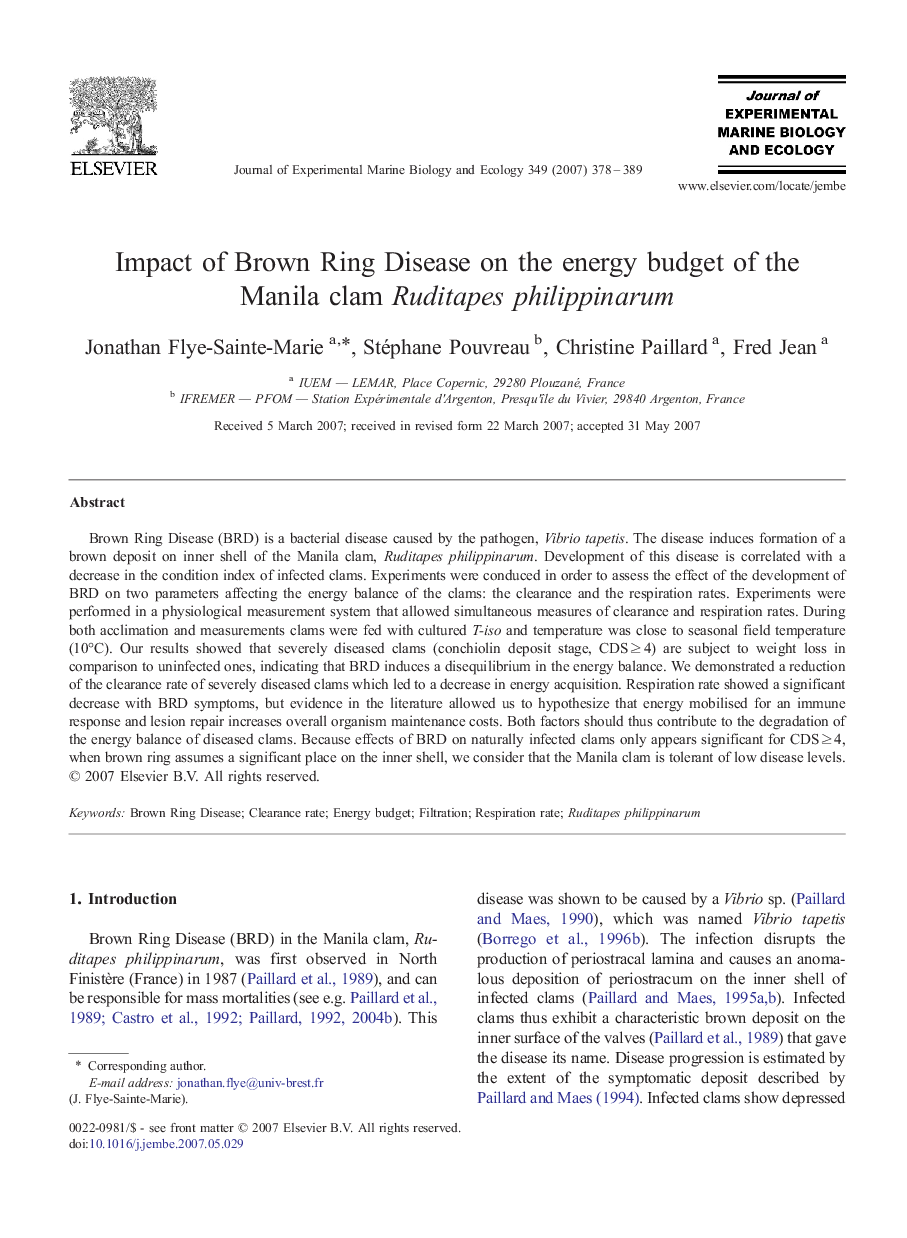| Article ID | Journal | Published Year | Pages | File Type |
|---|---|---|---|---|
| 4397660 | Journal of Experimental Marine Biology and Ecology | 2007 | 12 Pages |
Brown Ring Disease (BRD) is a bacterial disease caused by the pathogen, Vibrio tapetis. The disease induces formation of a brown deposit on inner shell of the Manila clam, Ruditapes philippinarum. Development of this disease is correlated with a decrease in the condition index of infected clams. Experiments were conduced in order to assess the effect of the development of BRD on two parameters affecting the energy balance of the clams: the clearance and the respiration rates. Experiments were performed in a physiological measurement system that allowed simultaneous measures of clearance and respiration rates. During both acclimation and measurements clams were fed with cultured T-iso and temperature was close to seasonal field temperature (10°C). Our results showed that severely diseased clams (conchiolin deposit stage, CDS ≥ 4) are subject to weight loss in comparison to uninfected ones, indicating that BRD induces a disequilibrium in the energy balance. We demonstrated a reduction of the clearance rate of severely diseased clams which led to a decrease in energy acquisition. Respiration rate showed a significant decrease with BRD symptoms, but evidence in the literature allowed us to hypothesize that energy mobilised for an immune response and lesion repair increases overall organism maintenance costs. Both factors should thus contribute to the degradation of the energy balance of diseased clams. Because effects of BRD on naturally infected clams only appears significant for CDS ≥ 4, when brown ring assumes a significant place on the inner shell, we consider that the Manila clam is tolerant of low disease levels.
